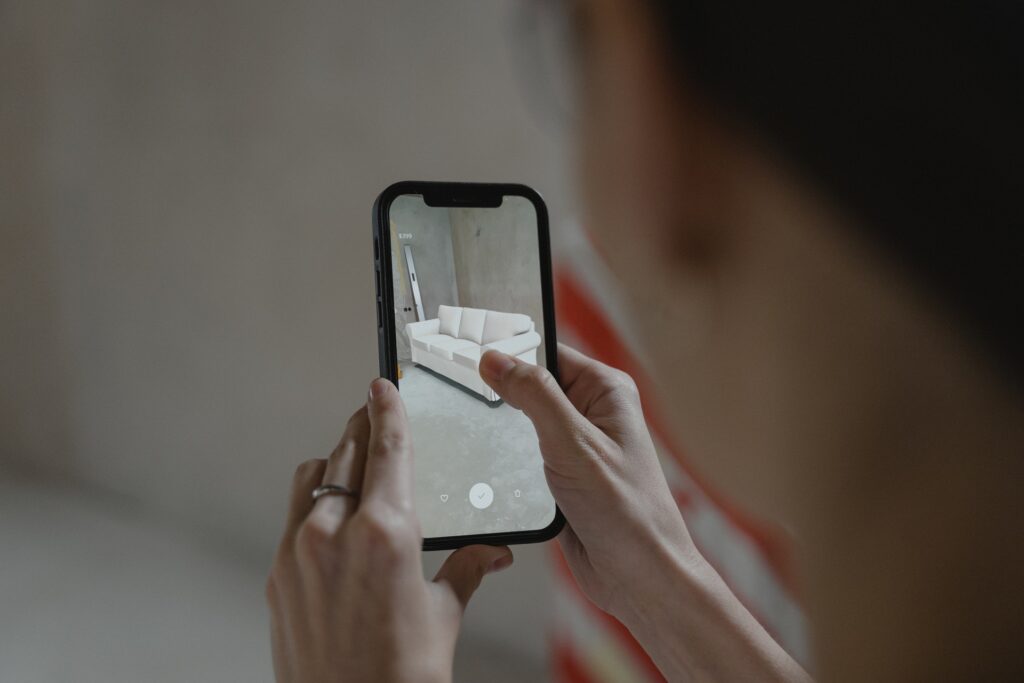Three out of every four dollars spent online now is spent using a mobile device.
Especially now, with COVID-19 having limited in-person contact, drastically reduced in-store footfall, and accelerated the adoption of digital commerce; mobile ecommerce is driving the future of retail. Enterprises must focus on a mobile-first strategy to succeed.
This isn’t a secret – your competitors are already moving online. Ever-increasing choices mean that customers are flocking to online shops that move beyond discounts and focus on frictionless experiences. For example, look at mobile wallets such as Google Pay or one-click checkout functionalities like Amazon’s – these integrations that simplify user experience are showing outsized returns.
Here are some key trends that we’re seeing in retail – these are the implementations to add to your mobile commerce strategy to enable and sustain growth:
- Personalize: Engage customers the way a human does, with individualized experiences
- Synchronize: Provide seamless cross-channel experiences with omnichannel commerce
- Simplify: Make buying easy with social commerce
- Delight: Offer life-like experiences with technologies like augmented and virtual reality
Delight customers with individualized experiences
Mobile phones have become an integral part of our lives, allowing retailers to reach customers 24/7. This gives retailers access to much more information than was possible before.
Retailers can leverage location and other phone information (search history, data from wearable devices, etc) to run targeted campaigns. Not just that—past behavior, such as frequency of purchases, can also be a good indicator of customers’ future needs.
Artificial intelligence and machine learning can help with profiling and targeting to create individualized shopping experiences. For example, clothing retailers can use available information about a customer’s previous purchases and returns to suggest the correct sizes by brand. Retailers can use the vast stores of data at their disposal to build individualized relationships that stimulate future sales.

Neverland, for instance, is harnessing mobile penetration and personalization capabilities to deliver highly useful, relevant, and carefully orchestrated end-to-end experiences to customers.
The gardening marketplace connects gardeners with local mom-and-pop gardening businesses. The app uses data collected from personalized customer surveys to offer curated recommendations to customers. Once the customer purchases a product and has it delivered, app notifications guide them through the process of caring for their plant. In this case, mobile phones transcend their role as a sales channel and become a vehicle for delivering meaningful experiences potentially across the customer’s lifetime.
To get started with personalization, retailers will need to establish a strategic plan for data management and analytics, detailed customer segmentation, as well as tech enablement across their organization.
Be everywhere at once with omnichannel commerce
The lines are blurring between physical and digital retail. Shoppers today are utilizing multiple channels to complete each purchase. Many shoppers research products online before going to brick-and-mortar stores. Or they may see a product in-store and look up customer reviews on their mobile phone before buying. Whether customers are looking at a social media post, texting with a chatbot, or speaking to your in-store staff, they expect a seamless experience.
Mobiles are a key part of the customer journey today. But instead of focusing solely on any one channel, retailers must try to understand how customers are using each. What gaps are they trying to fill? What does a truly omnichannel customer journey look like?
A well-defined omnichannel strategy will help retailers offer a unified customer experience (CX) across channels. For instance, customers’ overall preferences can be made sticky across channels. Cart-added items should ideally reflect across channels—mobile, web, tablet, app—and when a customer goes to a chatbot and clicks on “need help with my order”, it should automatically pick from their last orders.
But any omnichannel strategy today must place mobile experience at its center. Target, an early mover in omnichannel commerce, has been using mobile ecommerce solutions to solve problems for customers. Among many other useful features, its apps allow customers to easily navigate stores using store maps and aisle locations, and scan product barcodes to discover prices, reviews, and deals.

Paying attention to omnichannel CX—carefully considering the mobile experience as a key element—can help increase engagement, build customer loyalty, and ensure repeat business. Retailers can also use the data points collected from different channels to further inform and finetune their personalization strategy.
Make buying easy with social commerce
When defining a mobile strategy, retailers must also consider social commerce. Social commerce has the advantage of being less intrusive. Buyers can complete the purchase without too many interruptions, which results in fewer abandoned carts.
While it may not be the go-to choice for all retailers, social media can be powerful in establishing brands as aspirational. For clothing brands like Zara, social media can create the effect of a virtual shop window, offering users additional opportunities to interact and engage with the brand. Social media users can be incentivized to post on their platforms of choice to earn discounts. Further, social proof and evangelism can present powerful motivators for new customers to purchase.
The market for social commerce is growing at a CAGR of 31.4 percent and is expected to reach USD 604.5 billion by 2027. As Generation Z enters the workforce, social commerce will only become more intuitive over time, and it should be a part of every retail brands’ omnichannel strategy. Which channels your audience is using most often will determine what kind of social commerce strategy will work best for your brand.
Use augmented reality to offer life-like experiences
Deciding to buy an item of clothing or footwear over digital channels, without ever seeing or touching the product, can be difficult. Augmented reality (AR) and virtual reality (VR) technology offers retailers a solution.
Using AR technology, retailers can allow customers to take a photo with their mobile phone cameras, upload it, and “try on” different products. Such technologies have been applied successfully in the clothing, makeup, accessories, and eyewear industries—for example, cosmetics brand Sephora’s Virtual Artist feature. It’s also been used by brands like Ikea and Burrow to show customers how products such as sofas, armchairs, and storage units will look in their homes.

While AR and VR technology remains expensive and inaccessible to most people, applications such as these make them both scalable and accessible to everyone with a smartphone.
Should custom app development be part of your strategy?
People spend most of their time on mobile using apps. For retail brands, mobile ecommerce solutions facilitate direct interaction with customers and help to build loyalty. Apps can drive a lot of repeat purchases, but retailers will have to incentivize downloads and retention.
Depending on their industry context, many retailers may find it more effective to use other approaches, such as selling using their mobile website, selling via social media channels, or partnering with existing marketplaces. ecommerce marketplace solutions such as vertical marketplaces can allow retailers to lower the costs associated with app development, overheads, logistics, etc. while offering customers greater choice, flexibility, and value in each transaction.
Regardless of the channels in focus, a strategic approach that considers mobile commerce as a key part of the value chain is critical to retail success. Retailers must leverage technological innovation to find creative solutions to the problems faced by their customers, and they must act now to gain an advantage in this hyper-competitive space.
[Read about 10 Emerging E-Commerce Trends that are Reshaping the Future of Online Retail]












